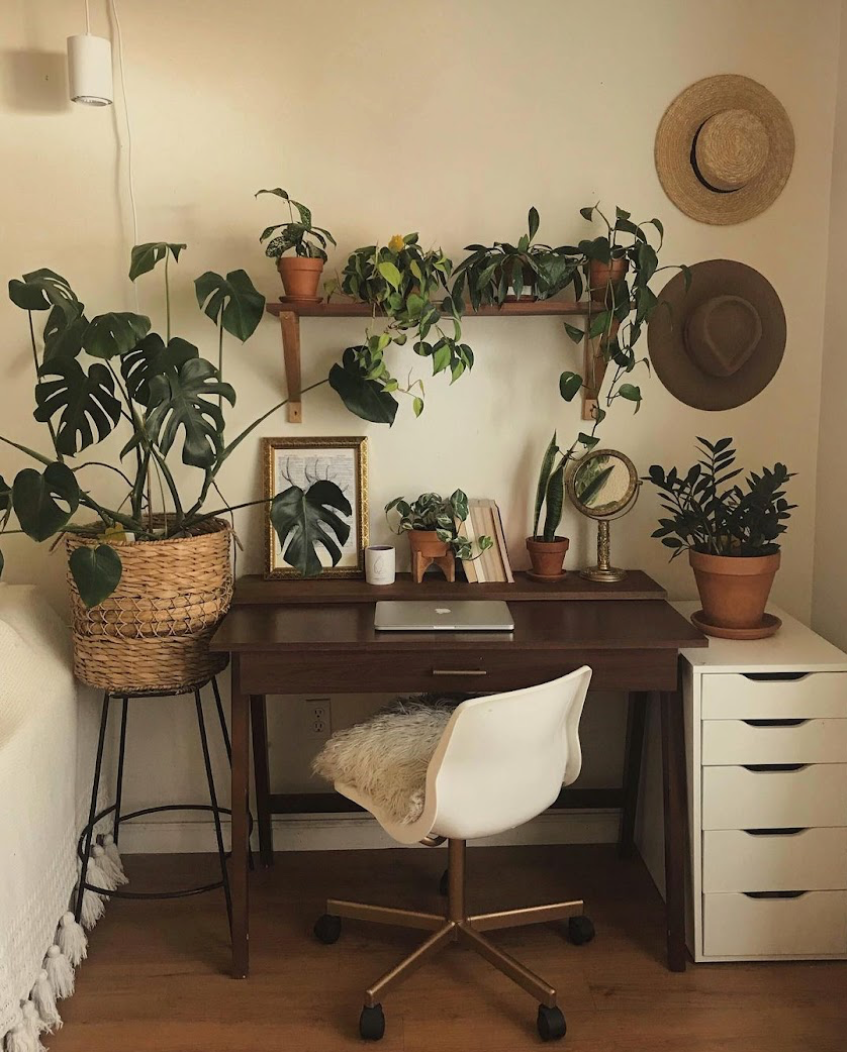
Table of Contents
By: Shehnaz Nilamdeen, Assoc. AIA, LFA
In the heart of Architectural Innovation lies the intersection of nature and the built environment - Biophilic Design. Recognizing its significance in both environmental conservation and human health, forward-thinking architectural firms are rapidly integrating biophilia into their designs. It is important to start this process early in the design process.This guide outlines the structured steps to host a biophilic charrette in our office, a collaborative and creative session, essential for developing biophilic-infused spaces.

Why is Biophilic Design So Important?
This movement creates spaces that connect humans to nature, fostering an innate sense of well-being and fostering a deeper connection to the environment. Research has consistently shown that biophilic design can greatly impact mood, stress reduction, and overall health. Architectural environments that employ these principles resonate not just aesthetically but emotionally.
Have you ever wondered, “Can architecture affect your health?” or "Why is biophilic design important?" We dive deep into these questions in one of our previous articles which you can find here: [Can Architecture Affect Your Health? Biophilic Design Offers Insight].
What is A Biophilic Charette?
A biophilic charrette, adapted from traditional intensive design sessions, is a focused gathering aimed at solving biophilic design challenges. It's a space for brainstorming and ideation, ensuring nature's incorporation from the start of the architectural design process.
Key Steps for Hosting a Biophilic Charrette
Preparation Phase:
- Research is Key: Understand the site's ecology, stakeholder needs, and cultural context.
- Define Attendee Roles: Involve stakeholders, design experts, and community members, clarifying their roles.
- Pre-Charrette Work: Encourage attendees to prepare through pre-reading or brainstorming.
Launching the Charrette:
- Kick off with attendee introductions, creating a comfortable atmosphere for collaboration. Agree on biophilic goals for the project, ensuring that everyone's on the same page. Discuss the project's ecological and cultural context - every place has a unique story that can enrich the design.This sets the tone for the day and fosters a deep, intrinsic connection to the overarching goal.
Identifying Purpose and Goals:
- Beyond Aesthetics: Clarify the 'why' behind biophilic integration - well-being, tradition, sustainability.
- Establish specific biophilic objectives pertinent to the project.
Stephan Kellerts Biophilic attributes to consider When Hosting a Charette:

 Created by the Living Future Educational Institute (https://living-future.org/)
Created by the Living Future Educational Institute (https://living-future.org/)
Interactive Design Phase:
- Design Exercises: This is where the magic happens. Get out into nature for an hour - Delve into biophilic elements, discuss how they can be integrated, and brainstorm preliminary design ideas, always keeping the end user in mind. Collaborative exercises foster creativity and ensure everyone's voice is heard. Discover insights about the project and its place. Testing the design concepts against biophilic elements like Direct Nature, Natural Patterns, and Place & Culture can produce innovative results.

Focus Areas and Strategy Development:
- Key Impact Zones: Identify areas where biophilic principles have the most impact.
- Strategy and Evaluation: Test and refine strategies, integrating continuous reflection.
Post-Charrette Follow-Up:
- Detailed Documentation: Record all aspects of the charrette for future reference.
- Feedback Loop: Continuously revisit charrette insights during design and execution. Make sure you are staying focused on the Purpose and Goals set forth early in the process. Revisit these goals over time.
Hosting a biophilic charrette transcends conventional design exercises, and is an important step in the design process.It offers a deep dive into creating architecture that resonates with human experiences and nature. It also broadens the outreach, beyond just an architect's vision, encompassing the perspectives of a wider community, forcing you to think outside the box.
At Soltech, we recognize the potential to infuse biophilic elements into unique spaces, even those with limited natural light, transforming them into areas that resonate with biophilic design. Interested in further exploring how biophilic design can transform your space? Get in touch with our Lighting Design team and we'd be happy to help.



